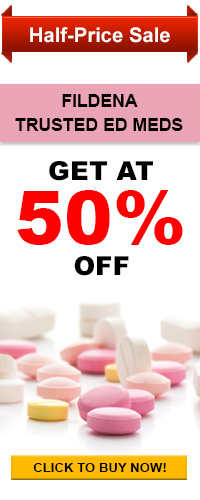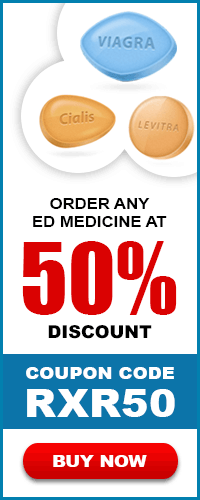Generic Name: Acetylcysteine (a-SEET-il-SIS-teen)
Dosage Form: Inhalation solution, intravenous solution, oral capsule, compounding powder, oral tablet.
Acetylcysteine solution is useful for treating abnormal, sticky, or thick mucus secretions in assorted lung problems eg, chronic emphysema, asthmatic bronchitis, bronchitis pneumonia, during anesthesia, following surgery or assorted lung tests. Acetylcysteine solution is acts as an agent reducing the viscosity of mucus (mucolytic). It works by slimming out mucus secretions and making them easier to move through and across the lungs. It secondly works by helping to rescue glaze in people with a tube in their windpipe mostly for people who have recently undergone a tracheostomy treatment/medication. N-acetyl-L-cysteine works really very effectively in reducing the death rate and inhibiting permanent harm caused by acetaminophen poisoning. For this use, cysteine is suggested to administer by mouth far then administration intravenously (by IV).
The drug majorly helps in precluding problems such as heart attack and stroke in people with serious kidney disease. The risk reduction with this medication can be as much as 40%. However, N-acetyl cysteine doesn’t lower the overall risk of death or death due to heart disease.
Drug Description:
Acetylcysteine is the nonproprietary name for the N-acetyl borrowed of naturally occurring amino acid, L-cysteine. The compound is a purely white crystalline powder which gets melts in range of 104° to 110°C. The medication has a very slight odor. The formula is also known as C5H9NO3 with molecular weight as M.W.=163.19. Acetylcysteine Solution (n-acetyl-l-cysteine) is supplied as a sterile solution which is basically not for injection in vials containing a 10% (100 mg/mL) or 20% (200 mg/mL). Solution of Acetylcysteine is known as the sodium salt.
The inactive ingredients in the drug are edetate disodium, sodium hydroxide and Sterile Water for Injection. The pH of the solution ranges from 6.0 to 7.5. The drug can be consumed by inhalation or direct instillation for mucolytic, or orally for acetaminophen of over dosage.
Indications:
As a mucolytic agent: the drug is indicated as assisting or aiding therapy for patients subjected abnormal, viscid, or inspissated mucous excretion in such conditions as: Chronic bronchopulmonary disease like - chronic emphysema, emphysema with bronchitis, chronic asthmatic bronchitis, tuberculosis, bronchiectasis and primary amyloidosis of the lung; Pulmonary obstacles of cystic fibrosis; Pulmonary snags associated with surgery; keen bronchopulmonary disease such as – pneumonia, bronchitis, tracheobronchitis; Atelectasis because of mucous problem; Use during anesthesia; Tracheostomy care; demonstrative bronchial investigation like – bronchograms, bronchospirometry, and bronchial wedge catheterization and lastly Post-traumatic serious chest conditions.
As an antidote for acetaminophen overdose: Acetylcysteine is administered orally which indicates as an antidote to stop or lower hepatic (pertaining to the liver) injury which may occur following the ingestion of a likely hepatotoxic abundance of acetaminophen. It is imperative to inaugurate treatment as soon as possible after the overdose is observed and, in any case within 24 hours of ingestion.
Dosage:
- General dosage pattern – Acetylcysteine Solution, (n-acetyl-l-cysteine) is available in rubber chocked glass vials containing 10 mL or 30 mL. The 20% solution is to be diluted to a lesser concentration with either Sodium Chloride Injection, Sodium Chloride for Inhalation, Sterile Water for Injection, or Sterile Water for Inhalation. The 10% solution can be used undiluted.
- Nebulization dosage pattern - The recommended dose for most patients is 3 to 5 mL of 20% solution or 6 to 10 mL of the 10% solution thrice to four times a day. Face Mask, Mouthpiece, and Tracheostomy: When nebulizer into a face mask, mouthpiece, or tracheostomy, 1 to 10 mL of the 20% solution or 2 to 20 mL of the 10% solution may be administered every 2 to 6 hour.
- Direct Instillation pattern - When used directly, 1 to 2 mL of a 10% to 20% solution may be given as often as every hour.
- When used for the routine nursing care of patients, 1 to 2 mL of a 10% to 20% solution may be given every 1 to 4 hours by instillation.
Using Guide:
- The solution is inhaled into the lungs using a nebulizer. Your doctor will demonstrate the proper way to use the nebulizer. Be sure to only use the nebulizer recommended by your doctor.
- If the solution is used with a face mask, a sticky substance may appear on the face which is nothing to worry about. The stickiness can be brought out by simply washing the face with plain water.
- If you miss a dose of the solution, consume the same as soon as possible. And if it is almost time for your next dose, skip the missed dose and go back to your regular dosing schedule. Do not use 2 doses at once, as it may result in overdose of the solution.
Storage:
Store unopened vials at room temperature, between 68° and 77° F (20° and 25° C). Store the medicine away from heat, moisture, and light. Solution may be thoroughly contaminated once opened. Use refrigerator for storing unopened vials approx. between 36° and 46° F (2° and 8° C) for up to 4 days. Do not store in the bathroom or wet places. Keep acetylcysteine solution far away from the reach of children, infants and pets.
Side Effects:
As all medicines cause side effects, but many people have no, or minor, side effects. Some most common side effects persist or become bothersome may include: Cold, clammy skin; drowsiness; fever; inflammation of the mouth or tongue; nausea; runny nose; vomiting.
Seek medical attention right away if you victim any severe side effects. Some allergic reactions one may victim may out of - rash; hives; itching; difficulty breathing; tightness in the chest; swelling of the mouth, face, lips, or tongue, mouth sores; throat and lung irritation.
Precautions:
As a mucolytic agent precautions taken should be – post administration of solution, an increased volume of liquefied bronchial secretions may occur. When you find cough is inadequate, the airway must be cultivating open by mechanical suction if required. If mechanical block is seen due to foreign body or local accumulation airway should be emptied by endotracheal aspiration, with or without bronchoscopy. Numbers of patients with bronchospasm could are quickly relieved with the use of a bronchodilator given by nebulization. In case of increase in bronchospasm the medication should be stopped immediately.
As an antidote for acetaminophen over dosage precautions are as noted – If encephalopathy due to hepatic collapsing becomes conspicuous, treatment should be discontinued to restrain farther administration of nitrogenous substances.






